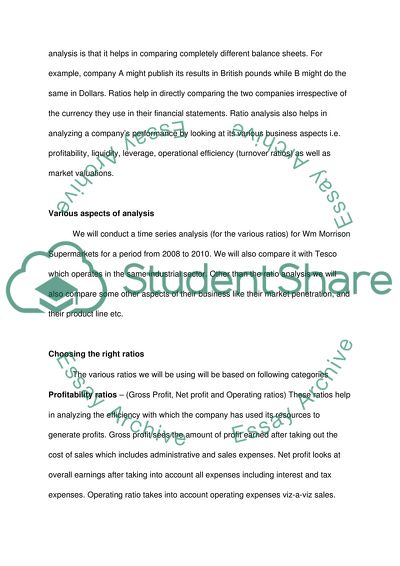Cite this document
(Morrison Supermarkets' Performance Assignment Example | Topics and Well Written Essays - 2500 words - 1, n.d.)
Morrison Supermarkets' Performance Assignment Example | Topics and Well Written Essays - 2500 words - 1. Retrieved from https://studentshare.org/finance-accounting/1750134-an-external-consultant-to-a-company-and-you-need-to-prepare-a-report-on-their-performance-based-on-the-information-they-provided-to-you-you-will-apply-ratio-analysis
Morrison Supermarkets' Performance Assignment Example | Topics and Well Written Essays - 2500 words - 1. Retrieved from https://studentshare.org/finance-accounting/1750134-an-external-consultant-to-a-company-and-you-need-to-prepare-a-report-on-their-performance-based-on-the-information-they-provided-to-you-you-will-apply-ratio-analysis
(Morrison Supermarkets' Performance Assignment Example | Topics and Well Written Essays - 2500 Words - 1)
Morrison Supermarkets' Performance Assignment Example | Topics and Well Written Essays - 2500 Words - 1. https://studentshare.org/finance-accounting/1750134-an-external-consultant-to-a-company-and-you-need-to-prepare-a-report-on-their-performance-based-on-the-information-they-provided-to-you-you-will-apply-ratio-analysis.
Morrison Supermarkets' Performance Assignment Example | Topics and Well Written Essays - 2500 Words - 1. https://studentshare.org/finance-accounting/1750134-an-external-consultant-to-a-company-and-you-need-to-prepare-a-report-on-their-performance-based-on-the-information-they-provided-to-you-you-will-apply-ratio-analysis.
“Morrison Supermarkets' Performance Assignment Example | Topics and Well Written Essays - 2500 Words - 1”, n.d. https://studentshare.org/finance-accounting/1750134-an-external-consultant-to-a-company-and-you-need-to-prepare-a-report-on-their-performance-based-on-the-information-they-provided-to-you-you-will-apply-ratio-analysis.


